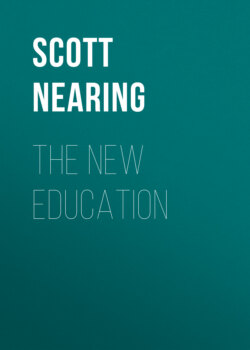Читать книгу The New Education - Scott Nearing - Страница 23
На сайте Литреса книга снята с продажи.
I The New School Machinery
ОглавлениеThe influence which the industrial changes of the past hundred years has had on education is considerable. With the transformation of the home workshop into the factory has come the transition from rural and village life to life in great industrial cities and towns. The introduction of specialized machinery has placed upon education the burden of vocational training. More important still, it has so augmented the size of the educational problem that an intricate system of school machinery has been devised to keep the whole in order.
The rural, or village, school was a one or two-room affair, housing a handful of pupils. Aside from matters of discipline, the administration of the school was scarcely a problem. General superintendents, associate superintendents, compulsory attendance laws, card index systems, and purchasing departments were unknown. The school was a simple, personal business conducted by the teacher in very much the same way that the corner grocer conducted his store—on faith and memory.
The growth of cities and towns necessitated the introduction of elaborate school machinery. In place of a score of pupils, thousands, tens, and even hundreds of thousands were placed under the same general authority. City life made some form of administrative machinery inevitable.
The increasing size of the school system—and in new, growing cities the school system increases with a rapidity equal to the rate of growth of the population—leads to increase in class size. A school of twenty pupils is still common in rural districts. In the elementary grades of American city schools, investigators find fifty, sixty, and in some extreme cases, seventy pupils under the charge of one teacher, while the average number, per teacher, is about forty.
Recrimination is idle. The obvious fact remains that the rate of growth in school population is greater than the rate of growth in the school plant. The schools in many cities have not caught up with their educational problem. The result is a multiplication of administrative problems, not the least of which is the question of class size.
